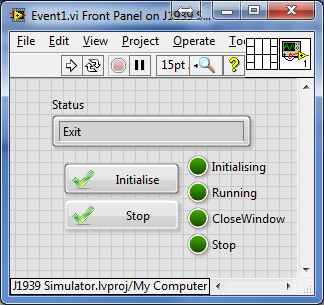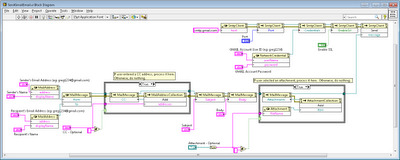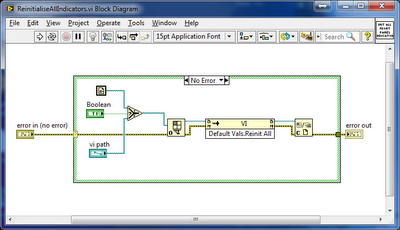I searched everywhere to get an example or some help of a simple event structure and a state machine working together. I have used state machines extensively and really like the way they work but never tried implementing an event structure into it.
Here is a very simple state machine which runs through an initialising state and then sits in a running state. The event structure is in the running state and monitors the two button for a state change and also the close window button.
Initialise button: Takes the program back into the Initialising state.
Stop button: Takes the program into the Stop state and then stops the program.
Close Window: Show a message that the program must first be stopped before it can be closed. Then takes the program into the CloseWindow state and then back to the Running state.
I am sure there are much better ways to perform this task so if you have any tips please leave me a comment. As soon as I find a more efficient process, I will be sure to update this post and program.
To download the example VI, use this link.
Greg


